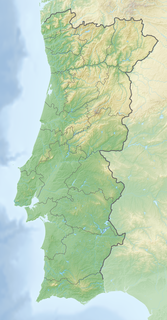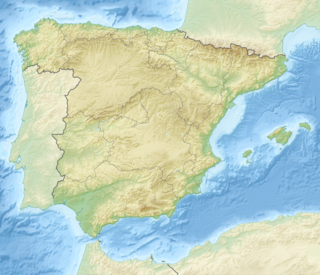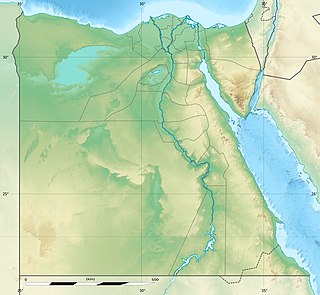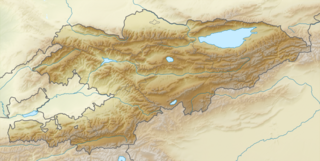
The Dinosaur Beds is a geological formation in Malawi whose strata date back to the Early Cretaceous. The age of the deposit is poorly constrained, but is likely to date from the Barremian to Aptian. Dinosaurs, turtles and crocodyliomorphs remains are among the fossils that have been recovered from the formation. It is correlated with the Galula Formation in Tanzania. It consists of two members, a lower unfossiliferous member consisting of deep red stained sandstones, and an upper fossiliferous member consisting of white sands and grey to red mudstones and siltstones. The upper member is 210 m thick in the vicinity of the CD-9 locality.

The Ankarafantsika Formation is a Late Cretaceous (Cenomanian) geologic formation of the Mahajanga Basin in the Boeny region of Madagascar, Africa. The fine-grained sandstones of the formation were deposited in a fluvial to lacustrine environment.

The Dohoin Usu Formation is a Late Cretaceous (Campanian) geologic formation in Mongolia. Dinosaur remains are among the fossils that have been recovered from the formation, although none have yet been referred to a specific genus.

The In Beceten Formation, also Beceten or Ibecten is a Coniacian to Santonian geologic formation in the Iullemmeden Basin of Niger. Dinosaur remains are among the fossils that have been recovered from the formation, although none have yet been referred to a specific genus. The lithology primarily consists of clays, fine limestones and sandy clays.

The Tiki Formation is a Late Triassic geologic formation in Madhya Pradesh, northern India. Dinosaur remains are among the fossils that have been recovered from the formation, although none have yet been referred to a specific genus. Phytosaur remains attributable to the genus Volcanosuchus have also been found in the Tiki Formation.

The Ankazomihaboka Formation is a Coniacian geologic formation in the Mahajanga Basin of northwestern Madagascar. The formation comprises claystones and sandstones deposited in a fluvial to lacustrine environment. The formation is overlain by the Marovoay Beds and overlies basalt.

The Caranguejeira Conglomerate is an Aptian to Cenomanian geologic formation in Portugal. Dinosaur remains diagnostic to the genus level are among the fossils that have been recovered from the formation.
The Harebell Formation is a Mesozoic geologic formation in Wyoming. Dinosaur remains diagnostic to the genus level are among the fossils that have been recovered from the formation.

The Vega Formation is a Late Jurassic (Kimmeridgian) geologic formation of the Ribadesella Group in Asturias, Spain. Dinosaur remains diagnostic to the genus level are among the fossils that have been recovered from the formation. The formation is around 150 metres thick and consists of "alternating white, pale grey and reddish sandstones, and red mudstones with several sporadic conglomeratic beds typically arranged in minor finnig-upward cycles within a major cycle of the same character". An isolated caudal theropod vertebra and a partial tooth are known from the formation, belonging to large megalosaurids around 10 metres in length, comparable to Torvosaurus. Other remains known from the formation include fragmentary turtle remains, crocodylomorph teeth, as well as a sauropod caudal vertebra (MUJA-0650). Dinosaur tracks are also known from the formation, including large theropod footprints and poorly preserved quadrupedal dinosaur footprints.

The Abu Agag Formation is a Turonian geologic formation in Egypt and Sudan. Indeterminate fossil ornithischian tracks have been reported from the formation.

The Baños del Flaco Formation is a Late Jurassic to Early Cretaceous (Tithonian to Berriasian geologic formation in central Chile. The formation comprises limestones and sandstones deposited in a shallow marine to fluvial environment. Fossil ornithopod tracks have been reported from the formation.

The Irhazer Shale or Irhazer II Formation is a Middle Jurassic geologic formation of the Irhazer Group in the Agadez Region of Niger. Fossil ornithopod tracks have been reported from the formation. The dinosaur Spinophorosaurus is known from the formation.

The Thomas Fork Formation is an Early Cretaceous (Albian) geologic formation in Wyoming. Fossil dinosaur eggs have been reported from the formation.

The Khodzhaosmansk or Khodzhaosman Formation is an Aptian to Albian geologic formation in Kyrgyzstan. Dinosaur remains and fossil dinosaur eggs have been reported from the formation.

The Ialovachsk or Yalovach Formation is a geologic formation in Kyrgyzstan, Tajikistan and Uzbekistan dating to the Santonian age of the Cretaceous period.

The Etjo Sandstone is an Early Jurassic geologic formation in northern Namibia. The formation overlies the Omingonde Formation in the Waterberg Basin and the Doros and Gai-As Formations in the Huab Basin and has a total thickness of 140 metres (460 ft). Fossil theropod tracks of Prosauropoda indet., Theropoda indet., Tetrapodium elmenhorsti, Saurichnium anserinum, S. damarense, S. parallelum and S. tetractis have been reported from the formation, deposited in an aeolian environment.

The Piedrahita de Muñó Formation is an Early Cretaceous geologic formation of the Cameros Basin in northern Spain. Fossil theropod tracks have been reported from the formation. Also fossils of Lepidotes sp., Polacanthus sp. and Testudines indet. were found in the formation.

The Marnes de Châlins is a Late Triassic geologic formation in France. Dinosaur remains are among the fossils that have been recovered from the formation, although none have yet been referred to a specific genus.














